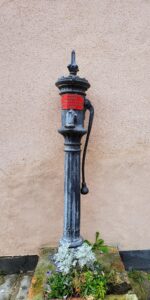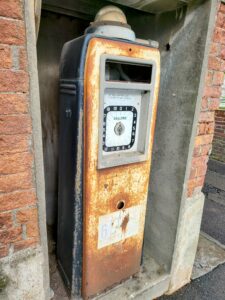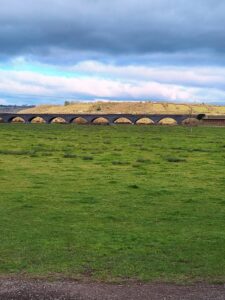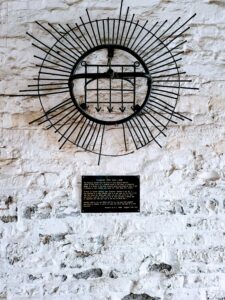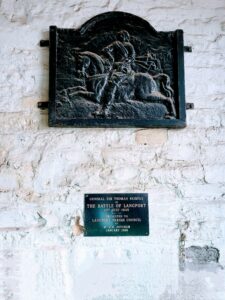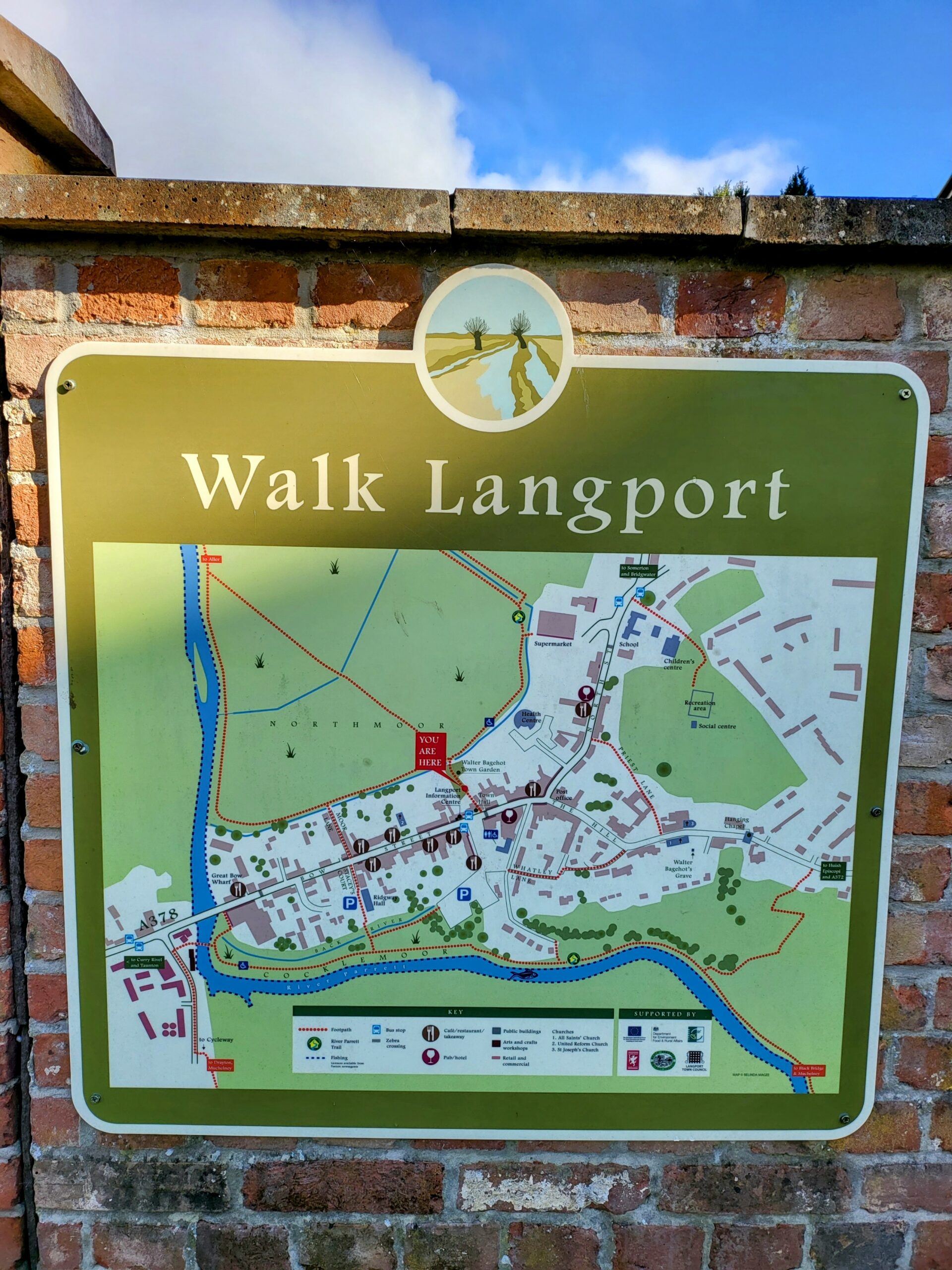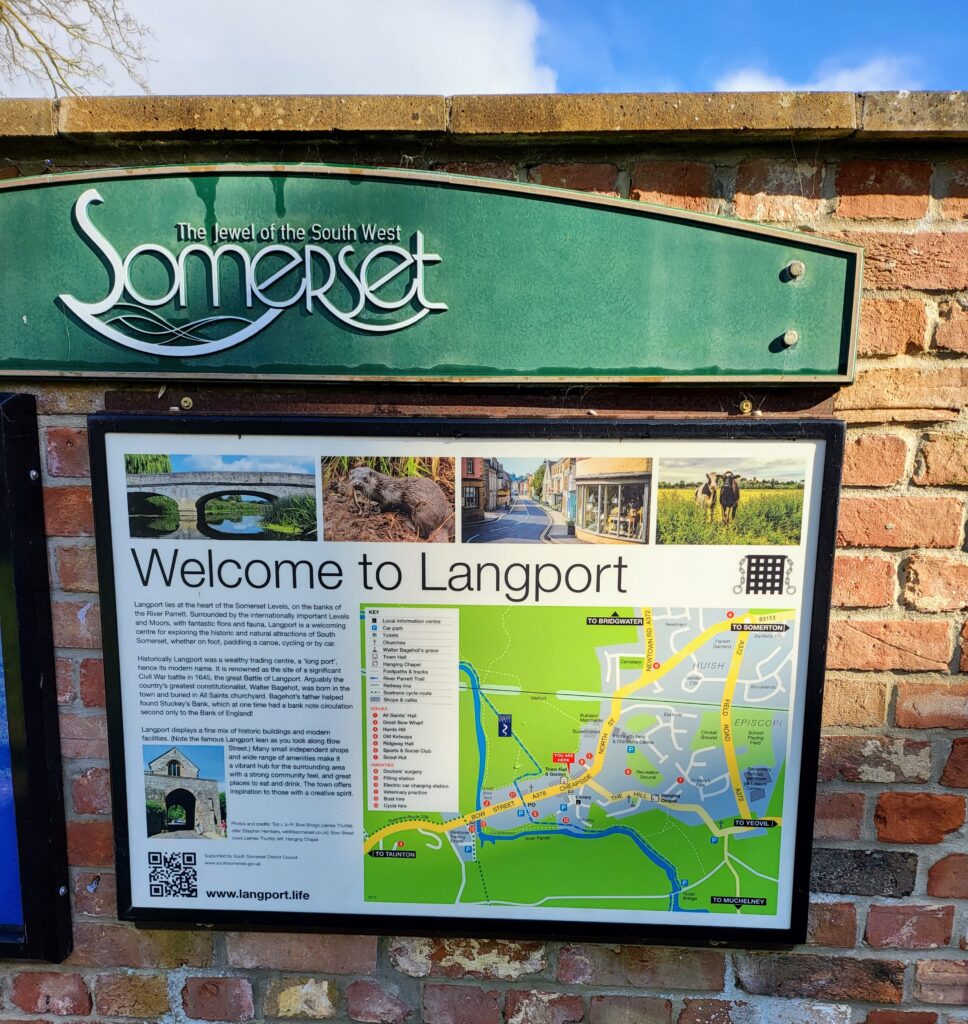
‘Langport’ was first mentioned in a 10th century Anglo-Saxon document called the Burghal Hidage. However, archaeological remains suggest that, many centuries before, the Romans had built a causeway crossing over the River Parrett here.
Langport sits at a natural crossing point on the River Parrett between two hills – Hurds Hill to the West and Langport Hill to the East. Its location was one of only a few places on the Somerset levels where the moors and marshes could be travelled through safely.
The town was first established at the top of the hill on the eastern side of the river around a marketplace. The town moved to its current location when the river trade grew. Bow Street was built along an arched causeway over the marshy ground. As a result of settlement of the land behind the causeway, you will notice some of the houses tilt backwards, which is known locally as ‘The Langport Lean’
Langport attracted people from far and wide due to its markets and services it had to offer.
Some of the history of Langport is still to be seen around the town today.
The Hanging Chapel & Church of All Saints
At the top of The Hill is the Hanging Chapel (more formerly known as the Chantry Chapel of the Blessed Virgin Mary). It sits atop a barrel vaulted archway across what was once the main road. The 13th century archway and chapel is all that remains of the East gate of the once defended town. It is a Grade I listed building & scheduled ancient monument.
In the 1900s, excavations showed that it was built on the site of a Saxon bank around the town.
Over the years the chapel has had many uses including the town hall and courthouse, grammar school, museum, armoury and a Masonic Lodge.
If you take a trip, have a look-out for the marks left by the lorries that have tried to squeeze through!
Close to the Hanging Chapel is the Church of All Saints dating from the 12th century, it also is a Grade I listed building.
The East window in the chancel contains a set of late 15th century glass depicting various saints. Although restored in the 19th century, it has one of the best kept
mediaeval windows in Somerset.
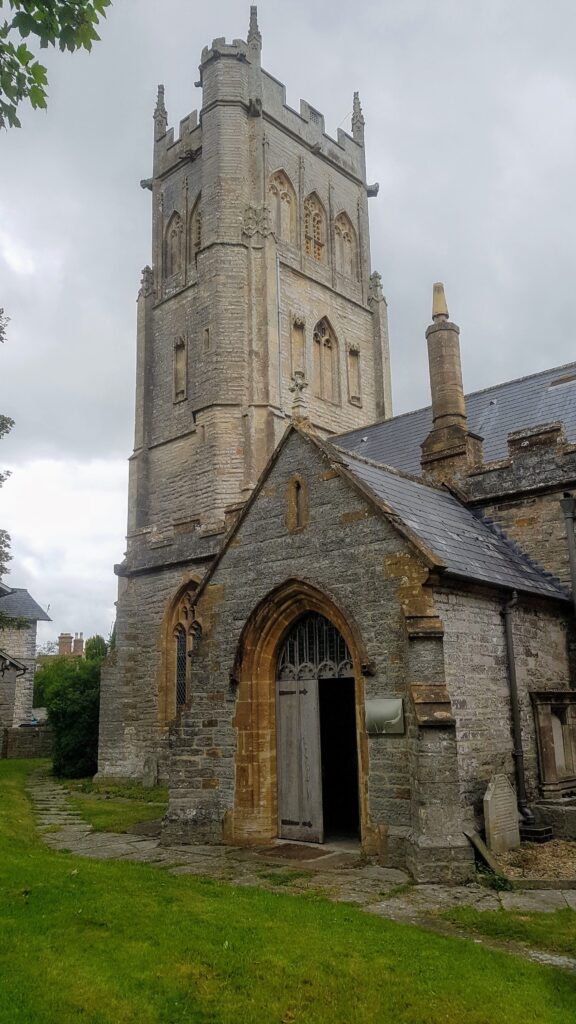
Along Cheapside & Bow Street
The Tudor House
Situated next to Art Tea Zen café. Built in 1776, this 18th century house was bought and restored by the Somerset buildings trust in 1991, and is now a Grade II listed building.
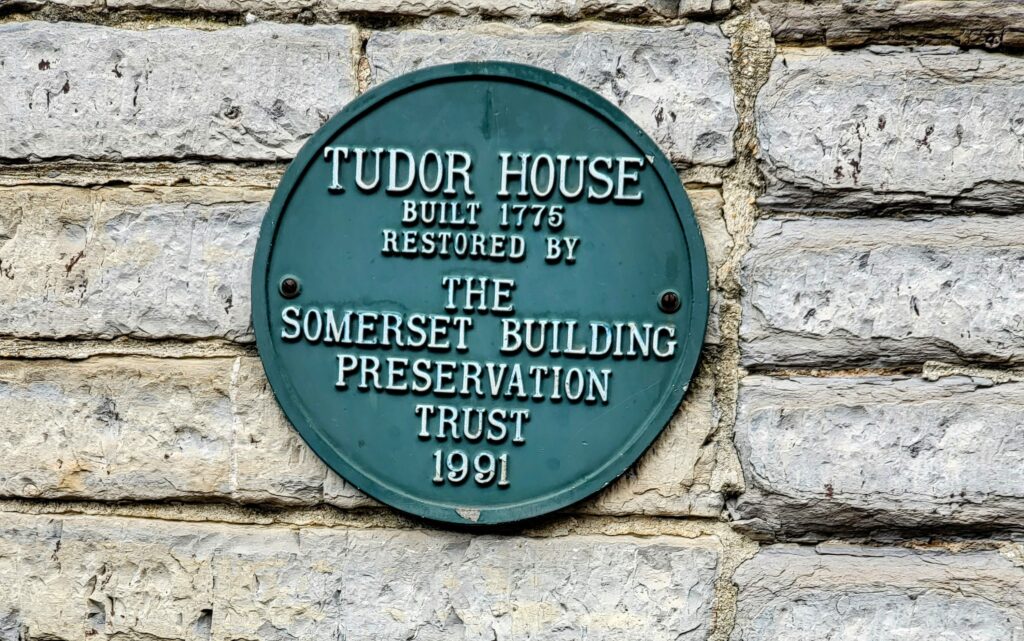
The Langport Arms Hotel
This charming public house dates back to 1420 and was originally built as a private house, in 1596 it began being used as an Inn, then known as The Swan. During the 18th century it became the Coaching Inn known as The Langport Arms Hotel.
Bank House (now Bank Chambers)
This was the premises of Stuckey’s Bank, founded in 1770. It became a highly successful West Country enterprise, printing its own currency, with a circulation in 1909 second only to the Bank of England!
The bank was subsequently taken over by Parr’s Bank, which became part of the Westminster Bank.
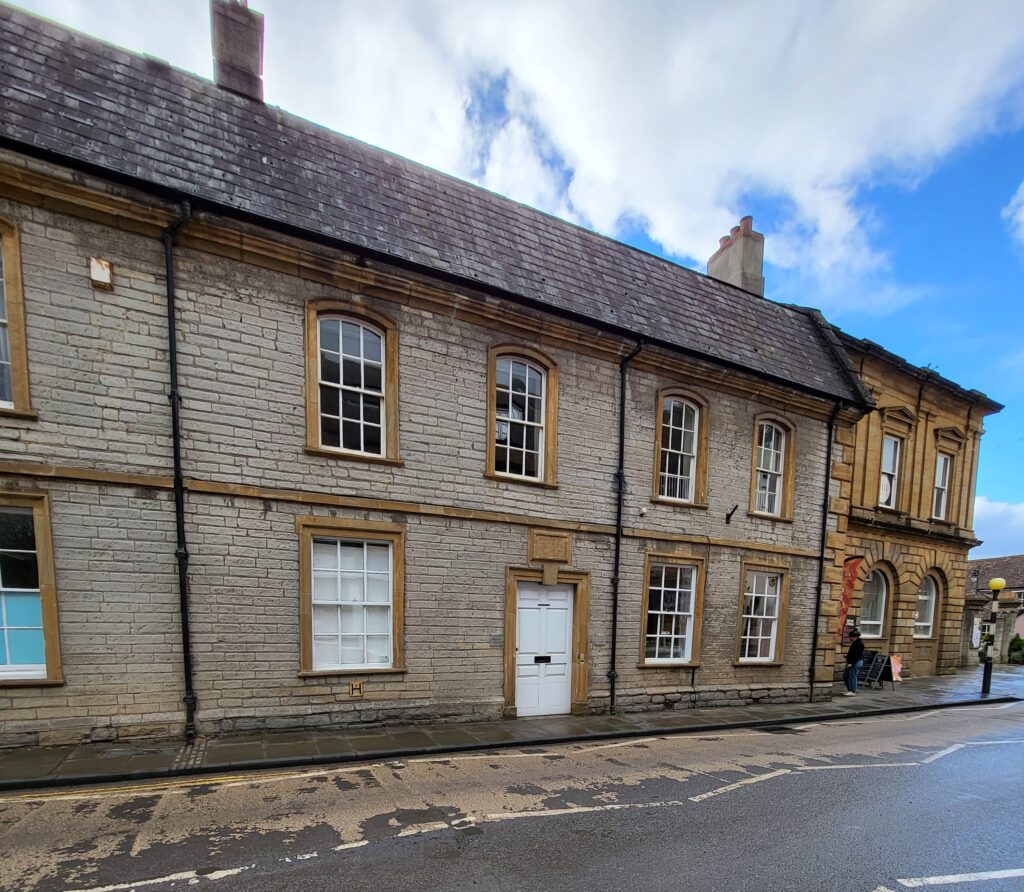
Walter Bagehot, journalist, businessman, and essayist, who wrote extensively about government, economics, literature and race, was born at Bank House in 1826. He is commemorated with a stone plaque above the door.
Walter went into business with George Stuckey, and their highly successful river trade business developed into the Somerset Trading Company.
Goods were unloaded at their wharf at Bow Bridge and transferred to carts or smaller boats for distribution further afield. This made Bow Street the busiest place in the town.
The Grade ll listed wharf building was purchased by the Ecos Trust in 2003 and with the help of English Heritage, The Somerset Buildings Trust and local councils, was brought back to life. It now houses The Kitchen at the Wharf café and other local businesses. The surrounding land was used to build an eco-friendly housing development.
The Town Hall
On the opposite side of the road to Bank House, you will see the Grade II listed Town Hall. Designed in the neoclassical style and built of red brick and ashlar stone, it was completed in 1732. It was built with a wooden bell turret with finial and weather vane.
An octagonal clock projecting out from the building was added in 1802. In 1883 the clock was replaced by J.W. Benson Ltd, a London based clockmaker.
It is still in use today, making it the oldest still-functioning town hall in the west country.
Walter Bagehot Garden
The Town Garden is a hidden oasis tucked away behind the Town Hall, reached via a path at the side of the undercroft. It was reconstructed and given to Langport Town Trust by Tesco when they built the local store.
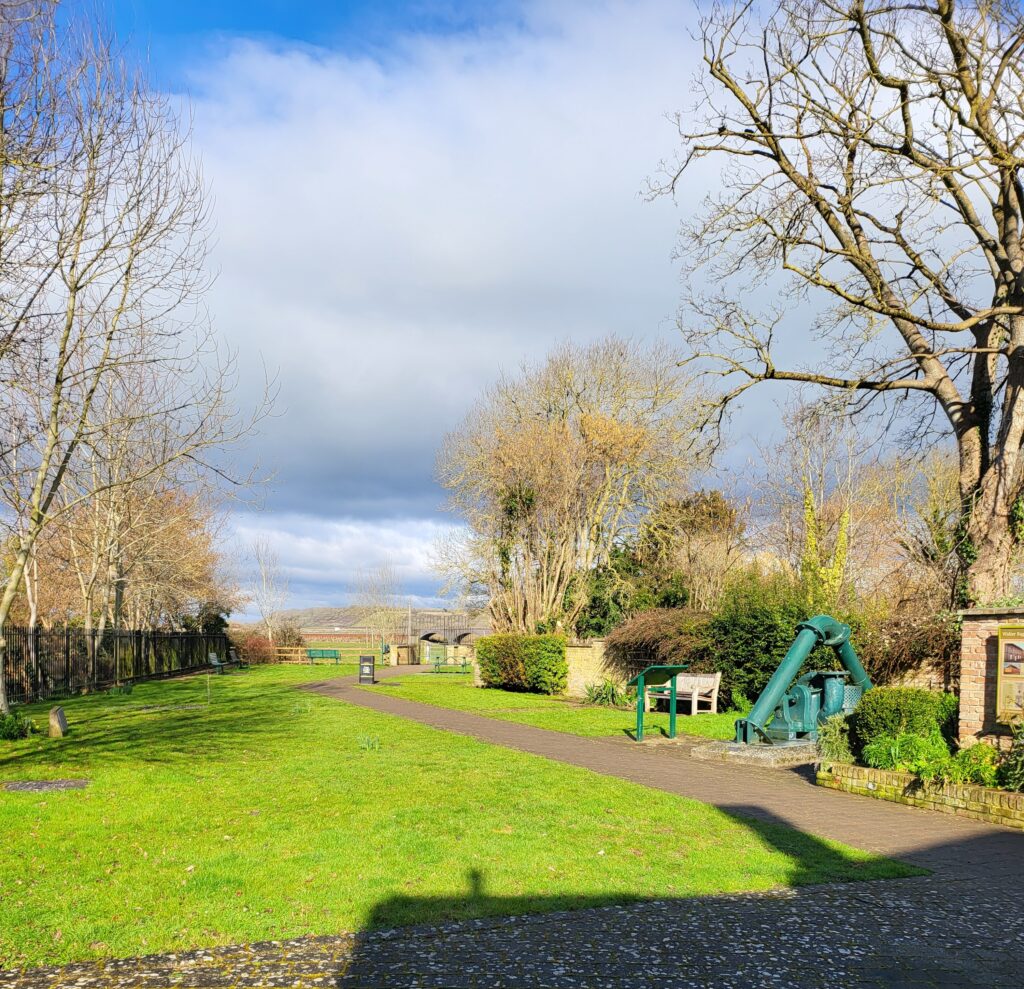
Renamed The Walter Bagehot Town Garden in 2012 it houses ‘the pump that saved Langport’ from flooding in the winter of 1960.
The pump that saved Langport.
Langport and the surrounding areas were always vulnerable to flooding from the River Parrett, and during the 1800s regular flooding occurred. However, in late October 1960 the flooding was far worse than ever before and was even talked about in Parliament where flood prevention schemes were discussed. The town was in real peril, Bow Street was flooded and homes and businesses were at risk.
It was around this time that a group of local men remembered there was a huge old G&H Gwynne of London pump, called The Invincible, that had set aside the river for many years (its reason for being there is unclear). They decided to pull the pump out, strip it down, replace some parts and try and get it working. Sucess! The pump roared into life and began pumping. Within the first hour 2 inches of water had been removed, they steadily increased the pump, and it began removing 8 inches an hour. The pump drained enough water to keep the town’s homes & businesses safe.
The pump was rescued from the river bank many years later (2010) and a display was created to remember the pump that saved Langport.
You can also find more information about the pump and Walter Bagehot on the boards.
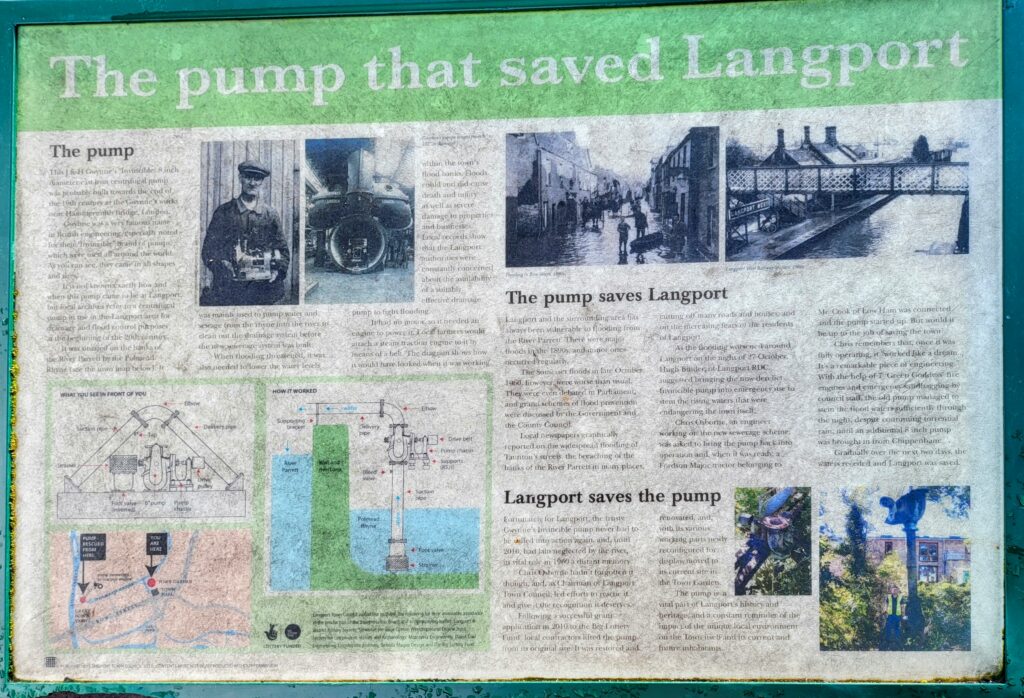
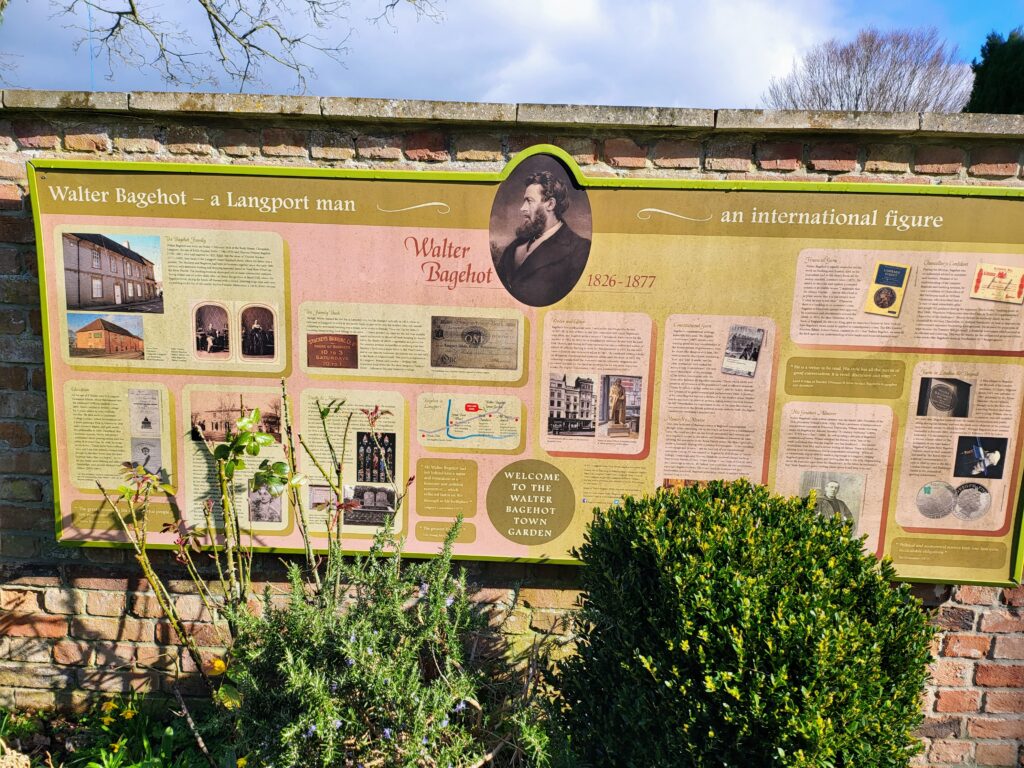
Great Bow Bridge
Great Bow Bridge with its three arches, completed in 1841, at a cost of £3,749, replaced the previous Mediaeval bridge.
The Mediaeval bridge had nine tiny arches, all too small to allow navigation, so had to be replaced under the terms of the Parrett navigation act of 1836.
A bridge at this site was first mentioned in 1220. The mediaeval bridge consisted of a total of 31 arches, nine of which crossed the river. 19 of the original arches were located by ground-penetrating radar in 1987, buried beneath the road, which runs from Great Bow Bridge to Little Bow Bridge.
The Railways of Langport
The railway came to Langport in 1853 and opened up new markets, but caused the decline of river traffic.
Both Langport Stations (yes, two stations for such a small town!) fell foul of the Beeching cuts in the 1960s.
The first to open was Langport West in 1853. Initially named just ‘Langport’ until the opening of the second station in 1906. It was sited at Westover and prone to winter flooding.
Langport East, on the Castle Cary to Taunton line, opened to passengers in July 1906. Visitors from London used to use this line to visit Kelways Nurseries to see their splendid peonies. The station was situated in what is now Eastover.
You can find out lots more information about Langport, from Langport Heritage and Langport Life
Book your stay with us to experience Langport yourself!
